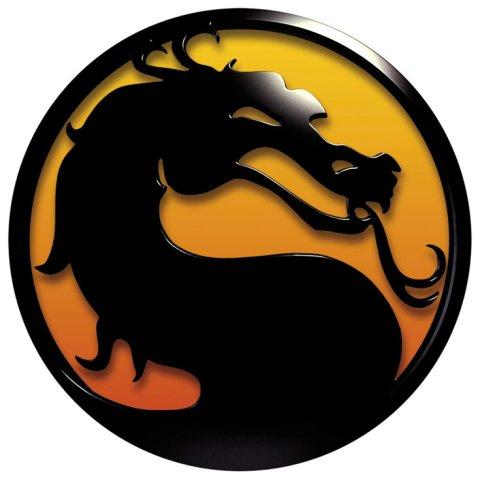Tho' Nature, red in tooth and claw
These words of Alfred Lord Tennyson have come to represent Darwinian "survival of the fittest." But how do you survive when you have neither tooth nor claw? Bacteria use chemical weapons, and using E. coli as a model, researchers sought to understand how simple regulators might produce multiple combat strategies. The investigation also asked whether strategy would provide a survival advantage.
E. coli’s chemical defenses
E. coli sense their environment, e.g., density, the intensity of resource competition, and the presence of competitors and change behavior accordingly. When threatened they release toxins, like antimicrobials, into the environment to kill the threat. E. coli releases several agents but the research concentrated on colicins -- agents which subdue other E. coli strains by entering their cytoplasm and exerting a range of cytotoxic effects. The authors considered colicin both a marker for threat-related behavior and an ideal focus because colicins are regulated by an exceedingly simple system, a single transcriptional repressor. The researchers looked at five of colicin’s thirteen forms, three which create openings into susceptible species and two that cripple susceptible strains’ DNA.
The presence of DNA damage in the environmental, referred to as the SOS response, is regulated by the transcriptional repressor, LexA. LexA, in turn, induces E. coli’s release of three chemicals: a toxin, an immunity protein protecting the strain that makes the toxin, and a lytic agent that releases the toxin by killing the cell that produces it.
Pre-emptive attack
Because of differing strengths at LexA binding sites, suppression of toxin production in the absence of the SOS warning signal is incomplete; some toxins are produced in the absence of DNA damage. These spontaneously colicin-releasing E. coli were present and well distributed in colonies, and the toxin released were in sufficient amounts to inhibit susceptible competitors. Researchers concluded that colicin "produced in the absence of threat, generating what is -- from a behavioral perspective -- a pre-emptive attack."
These pre-emptive cells undergo lysis releasing their toxins; so there is a cost, for the cell itself, and to the colony in losing one of its members. Could there be some unanticipated gain? The researchers found that the cells exhibiting incomplete suppression by LexA, the pre-emptors, while able to divide were far more unlikely to do so than other E. coli. Pre-emptors were cells "that have relatively low immediate reproductive value, but that is likely to be healthy enough (to have sufficient social value)" producing enough colistin for a pre-emptive attack. Pre-emptors, of lower “reproductive value,” were sacrificed for the greater good of the bacterial colony.
Recruiting an army
Within the E. coli colony are two additional populations. The cells that typically respond to the SOS general alarm, requiring one threshold of damaged DNA to remove LexA suppression. For a crucial subgroup, there is a lower threshold that in conjunction with the presence of the pre-emptor’s released colicin trigger DNase formation, an enzyme that destroys DNA's backbone. The subgroup’s behavior was termed autoinducing by the researchers, and it serves to amplify the actions of the pre-emptive attackers.
The amplification spreads geographically, like a wave, from the site of pre-emptive attack outwards throughout the colony, like a bacterial Paul Revere. In the author's words, "The cells closest to the interface [with a different E. coli strain] seem to be informing the cells further away from the competitor of the incoming attack via their responses and colicin release." In a final phase of E. coli’s response to a threat, there is sufficient damaged DNA to surpass the SOS threshold, and the remaining colony members become engaged in combat.
One regulator, multiple expressions
Pre-emptors and autoinducing cells have different locations and densities within the colony, and they respond to differing environmental factors and at varying thresholds. While the removal of LexA’s colicin suppression is a final common pathway for E. coli defense, researchers have demonstrated its expression in multiple ways because of environmental differences. But is this merely a responsive chemical system or an "evolved strategy?"
Chemistry or evolutionary strategy
The authors felt two conditions were required for their findings to be an evolutionary strategy rather than chemical serendipity.
First, that the response of, in this case, colicin, must have the potential to be altered by natural selection. The experimental work demonstrating different cell subgroups and thresholds for response meet that condition.
Second, the behavior, in this instance the coordinated attacks on foreign E. coli strains through pre-emptors, and their autoinducing armies, must confer an evolutionary survival benefit. Invoking game theory, they predicted that production of high levels of toxin was helpful when a strain was the larger, dominant colony -- either to completely overwhelm a threat or because evolutionary fitness is more appropriately thought of as defensive activity rather than aggression in the quest for resources.
In a final set of experiments, they showed that autoinduction was beneficial in competition against smaller colony strains. Autoinduction resulted in no survival benefit when invading a larger colony. For the researchers, these collaborative responses to attack, while well known among social animals, is the first demonstration of such a survival response in social bacteria, specifically E. coli.
Source: Bacteria Use Collective Behavior to Generate Diverse Combat Strategies Current Biology DOI: 10.1016/j.cub.2017.12.030




